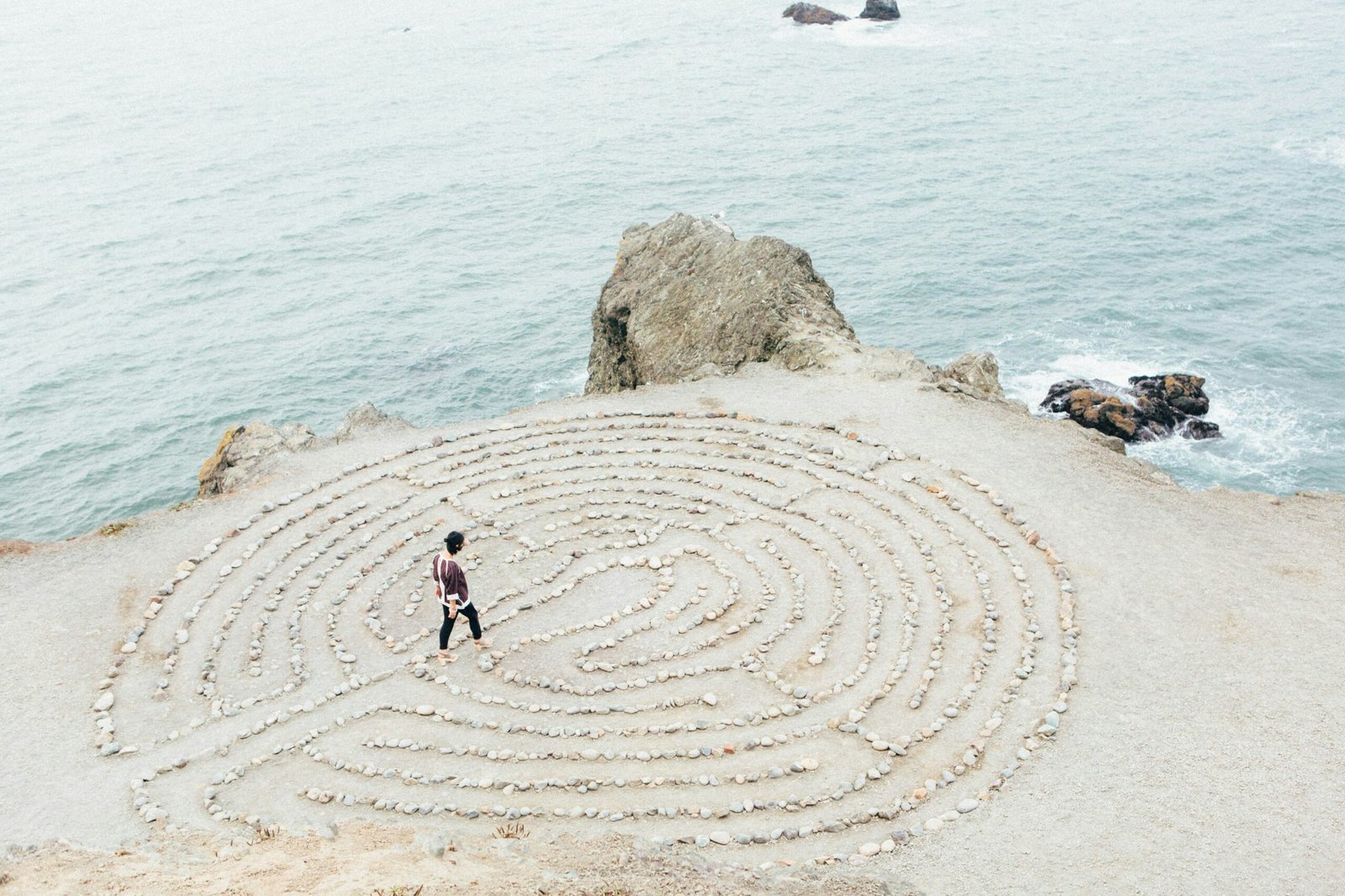
The Meaning of Spiritual Journeys
Spiritual journeys have been an integral part of human culture for centuries. They are deeply personal and transformative experiences that allow individuals to connect with their inner selves, their beliefs, and the divine. These journeys can take many forms, but two of the most common are pilgrimage routes and rituals.
Pilgrimage routes have long been a way for believers to embark on a physical and spiritual journey towards a sacred destination. These routes often have historical and religious significance, attracting people from all walks of life who seek a deeper connection with their faith. For example, the Camino de Santiago in Spain is one of the most famous pilgrimage routes in the world, with thousands of people walking its path each year. The journey itself is seen as a metaphor for life, with pilgrims facing physical challenges and reflecting on their spiritual beliefs along the way.
Rituals, on the other hand, are specific actions or ceremonies performed with a religious or spiritual purpose. They can range from simple daily practices to elaborate ceremonies that mark significant life events. Rituals provide individuals with a sense of structure and meaning, allowing them to connect with something greater than themselves. For example, the Hindu ritual of Aarti involves the offering of light to deities, symbolizing the illumination of one’s inner self and the seeking of divine blessings. This ritual is often performed in temples or during religious festivals, creating a sacred space for individuals to connect with their spirituality.
Both pilgrimage routes and rituals offer individuals a sense of purpose and a means to explore their spirituality. They provide a space for reflection, self-discovery, and the strengthening of one’s faith. These journeys can be transformative, allowing individuals to gain a deeper understanding of themselves and their place in the world. They also offer a sense of community and connection, as individuals come together to share in these sacred experiences.
Ultimately, spiritual journeys are a way for individuals to seek meaning and connection in their lives. They offer a path towards personal growth, self-reflection, and a deeper understanding of the divine. Whether it is through walking a pilgrimage route or participating in a ritual, these journeys provide individuals with the opportunity to explore their spirituality and embark on a transformative quest.
One of the key aspects of pilgrimage routes is the sense of community that they foster. Along these sacred paths, pilgrims from all walks of life come together, united by their shared purpose and devotion. They form bonds and friendships that transcend language, culture, and nationality. The Camino de Santiago, for example, is known for its vibrant and diverse community of pilgrims. As they walk side by side, they exchange stories, share meals, and offer support to one another. This sense of camaraderie creates a powerful atmosphere of solidarity and mutual respect. It is not uncommon for lifelong friendships to be formed during these journeys, as individuals discover the beauty of human connection in the midst of their spiritual quest.
Similarly, the Hajj is a testament to the strength of community. Millions of Muslims, dressed in simple white garments, gather in Mecca to perform the rituals together. This collective experience of worship reinforces the idea that Islam is a global faith, transcending borders and boundaries. The diversity of the pilgrims is a reflection of the diversity within the Muslim community itself, and it serves as a reminder of the inclusive nature of the religion. Pilgrims from different countries and backgrounds come together, united in their devotion to God and their desire to fulfill the religious obligations of the Hajj.
In addition to the sense of community, pilgrimage routes also offer pilgrims the opportunity for introspection and self-discovery. The physical challenges that pilgrims face along the way serve as a metaphor for the trials and tribulations of life. The long, arduous walks, the blistered feet, and the exhaustion all become symbolic of the struggles that individuals encounter on their spiritual journey. As pilgrims overcome these obstacles, they develop resilience and inner strength. They learn to push beyond their limits and discover a newfound sense of determination and perseverance.
Moreover, pilgrimage routes provide pilgrims with a unique opportunity to disconnect from the distractions of everyday life and immerse themselves in a sacred and contemplative environment. The simplicity of the journey, the solitude of the trails, and the beauty of the natural surroundings create a conducive atmosphere for reflection and meditation. Away from the noise and busyness of the modern world, pilgrims can find moments of stillness and silence, allowing them to connect with their inner selves and deepen their spiritual awareness.
In conclusion, pilgrimage routes are not just physical journeys; they are transformative experiences that have the power to shape and enrich the lives of those who embark on them. Through the sense of community, the challenges faced, and the opportunities for introspection, pilgrims are able to embark on a path of self-discovery and spiritual growth. Whether it is the Camino de Santiago or the Hajj, these sacred routes offer pilgrims a unique opportunity to seek enlightenment, strengthen their faith, and forge connections with fellow believers.
Rituals are an integral part of spiritual journeys. They are symbolic actions that help individuals connect with the divine and create a sense of sacredness in their lives. Rituals can take many forms, from simple daily practices to elaborate ceremonies.
One example of a ritual is the act of meditation. Meditation is a practice that has been used for centuries to quiet the mind, cultivate inner peace, and enhance spiritual awareness. It involves focusing one’s attention and eliminating the distractions of the external world. Through meditation, individuals can tap into their inner wisdom and connect with a higher power.
Another ritual that is widely practiced is the act of prayer. Prayer is a form of communication with the divine, a way of expressing gratitude, seeking guidance, and asking for blessings. It can be done individually or in a community setting, and it is an essential component of many religious traditions.
Yoga is another example of a ritual that combines physical movement with spiritual practice. Originating in ancient India, yoga is a holistic discipline that aims to harmonize the body, mind, and spirit. Through a series of postures, breathing exercises, and meditation, practitioners can achieve a state of balance and inner peace.
In addition to these well-known rituals, there are countless other practices that individuals incorporate into their spiritual journeys. These may include lighting candles or incense, creating altars or sacred spaces, chanting or singing, and engaging in acts of service or charity. Each of these rituals serves a unique purpose and can deepen one’s connection to the divine.
One such practice is the use of crystals and gemstones. These natural elements are believed to possess unique energetic properties that can enhance spiritual growth and healing. Many individuals incorporate crystals into their rituals by placing them on altars, wearing them as jewelry, or using them during meditation.
Another ritual that is gaining popularity is the practice of smudging. Smudging involves burning sacred herbs, such as sage or palo santo, to cleanse a space or person of negative energy. This ritual is often used before meditation or prayer to create a sacred and energetically clear environment.
Some individuals also find solace and connection through the ritual of journaling. By putting their thoughts and emotions onto paper, they can gain clarity, process their experiences, and communicate with the divine. Journaling can be a deeply personal and introspective practice that allows individuals to explore their spirituality on a deeper level.
Ultimately, rituals are a way for individuals to create a sacred space within themselves and invite the divine into their lives. They provide structure, meaning, and a sense of connection to something greater than oneself. Whether through meditation, prayer, yoga, or any other practice, rituals offer a gateway to the divine and a path to spiritual growth and transformation.
Moreover, spiritual journeys can also be a catalyst for personal healing and transformation. Many individuals embark on these journeys as a way to heal from past traumas, overcome personal challenges, or find solace in times of grief or loss. The act of physically moving through sacred spaces or engaging in sacred rituals can help individuals release emotional burdens, find closure, and gain a sense of peace and wholeness.
Additionally, spiritual journeys often involve encounters with spiritual leaders, mentors, or fellow seekers who can provide guidance, support, and wisdom along the way. These interactions can be instrumental in helping individuals navigate their own spiritual paths, gain clarity about their beliefs and values, and deepen their connection to their chosen spiritual traditions.
It is worth noting that spiritual journeys are not limited to specific religious or cultural practices. They can take many forms, such as visiting sacred sites, embarking on vision quests, participating in meditation retreats, or even engaging in acts of service and charity. The essence of a spiritual journey lies in the intention behind it – the desire to seek something greater than oneself, to connect with the divine, and to explore the depths of one’s own spirituality.
In conclusion, spiritual journeys have the potential to be transformative experiences that go beyond mere travel or tourism. They offer individuals a chance to embark on a profound inner journey, connect with others on a deep level, find healing and solace, and gain a renewed sense of purpose and meaning in life. Whether undertaken individually or as part of a community, these journeys can be powerful tools for personal growth, self-discovery, and spiritual awakening.


